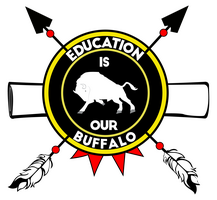Before all things it must be understood that the valley of Cuzco is in 13° 15' from the equator on the side of the south pole. In this valley, owing to its being fertile for cultivation, there were three tribes settled from most ancient times, the first called Sauaseras, the second Antasayas, the third Huallas. They settled near each other, although their lands for sowing were distinct, which is the property they valued most in those days and even now. These natives of the valley lived there in peace for many years, cultivating their farms.
Some time before the arrival of the Incas, three Sinchis, strangers to this valley, the first named Alcabisa, the second Copalimayta, and the third Culunchima, collected certain companies and came to the valley of Cuzco, where, by consent of the natives, they settled and became brothers and companions of the original inhabitants.
So they lived for a long time. There was concord between these six tribes, three native and three immigrant. They relate that the immigrants came out to where the Incas then resided, as we shall relate presently, and called them relations. This is an important point with reference to what happened afterwards.
Before entering upon the history of the Incas I wish to make known or, speaking more accurately, to answer a difficulty which may occur to those who have not been in these parts. Some may say that this history cannot be accepted as authentic being taken from the narratives of these barbarians, because, having no letters, they could not preserve such details as they give from so remote an antiquity.
The answer is that, to supply the want of letters, these barbarians had a curious invention which was very good and accurate. This was that from one to the other, from fathers to sons, they handed down past events, repeating the story of them many times, just as lessons are repeated from a professor's chair, making the hearers say these historical lessons over and over again until they were fixed in the memory.
Thus each one of the descendants continued to communicate the annals in the order described with a view to preserve their histories and deeds, their ancient traditions, the numbers of their tribes, towns, provinces, their days, months and years, their battles, deaths, destructions, fortresses and Sinchis.
Finally they recorded, and they still record, the most notable things which may be expressed in numbers (or statistics), on certain cords called quipu, which is the same as to say reasoner or accountant. On these cords they make certain knots by which, and by differences of color, they distinguish and record each thing as by letters. It is a thing to be admired to see what details may be recorded on these cords, for which there are masters like our writing masters.
Besides this they had, and still have, special historians in these nations, an hereditary office descending from father to son. The collection of these annals is due to the great diligence of Pachacuti Inca Yupanqui, the ninth Inca, who sent out a general summons to an the old historians in all the provinces he had subjugated, and even to many others throughout those kingdoms. He had them in Cuzco for a long time, examining them concerning their antiquities, origin, and the most notable events in their history.
These were painted on great boards, and deposited in the temple of the Sun, in a great hall. There such boards, adorned with gold, were kept as in our libraries, and learned persons were appointed, who were well versed in the art of understanding and declaring their contents. No one was allowed to enter where these boards were kept, except the Inca and the historians, without a special order of the Inca.
In this way they took care to have all their past history investigated, and to have records respecting all kinds of people, so that at this day the Indians generally know and agree respecting details and important events, though, in some things, they hold different opinions on special points.
Go Back To: Inca Nation
